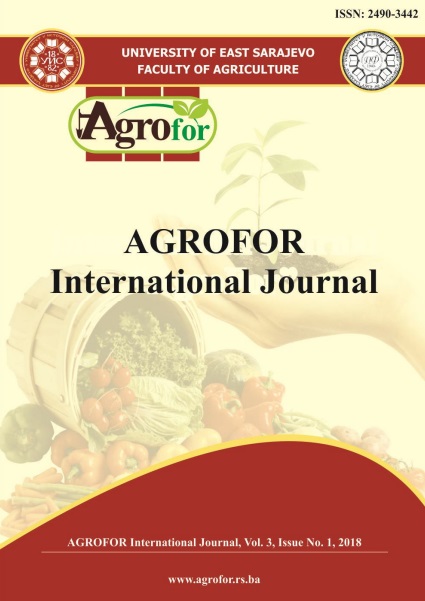EFFECTS OF CULTIVAR AND MULCHING ON THE POTATO YIELD
DOI:
https://doi.org/10.7251/AGRENG1801132OAbstract
Plant growing technology involves usage of complex agrotechnical operations
aimed at creating favorable conditions for plant growth and development, that is,
for better exploitation of cultivar genetic potential. Effects of mulching with white
and black polyethylene foil, and organic mulch (straw) were studied in three, dripirrigated
potato cultivars: Carrera (early), Laura (medium early) and Agria
(medium late). Treatments were arranged in a randomized complete block design
with four replications at the site of Zemun Polje, Serbia (44°88'N, 20°35'E, 79 m
a.s.l.) in three consecutive years (2011–2013). Results obtained on the variants
with different mulch materials were compared with results attained on the plot with
bare soil (control). The highest average number of tubers per plant was determined
in cv. Laura’s control variant (12.0), while the lowest average number of tubers
was determined in the cv. Agria with white mulch (8.2). The highest average tuber
mass (146.3 g) and total tuber yield (59.6 t ha-1) was determined in cv. Carrera
subjected to the straw mulch treatment. The lowest average tuber mass and tuber
yield was found in the cv. Agria on the variant with black polyethylene foil (83 g
and 27.8 t ha-1). The results obtained in our study indicate positive effect of the
combination of straw mulch and irrigation on the productivity of potato. Modern
growing technology, which includes the regulation of temperature in the surface
soil layer by combination of soil mulching, drip irrigation system, and the use of
adequate genotypes, can result in high potato yield.

